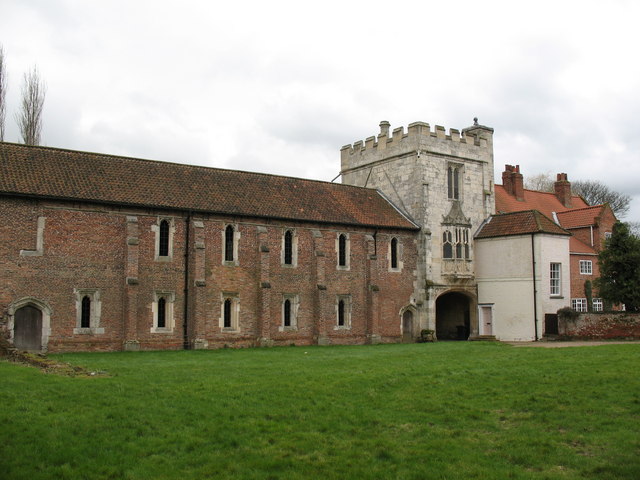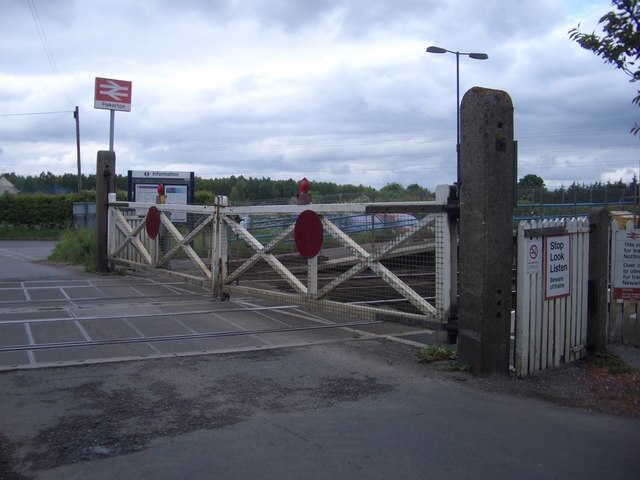|
Cawood, Wistow And Selby Light Railway
The Cawood, Wistow and Selby Light Railway (CW&SLR) was a short light railway in a rural part of Yorkshire, England. The company was sometimes referred to as the Cawood, Wistow and Selby Railway. Precursor line An Act of Parliament in 1879 allowed the construction of the ''Church Fenton, Cawood and Wistow Railway'' from a junction at Church Fenton through Cawood to Wistow. Further Acts were passed authorising an extension to Selby and a junction line to the Hull and Barnsley Railway (HBR) at Drax. In the event, the necessary capital could not be raised, so neither the extensions nor the original line were built. History In the 1890s the ''Cawood, Wistow and Selby Light Railway Company'' (CW&SLR) was formed at the initiative of light railway entrepreneur Sebastian Meyer, acting with a group of men of influence in the region. The North Eastern Railway (NER) gave "generous assistance", which appears to have amounted to moral support, advice and lack of opposition, but no cas ... [...More Info...] [...Related Items...] OR: [Wikipedia] [Google] [Baidu] |
North Yorkshire
North Yorkshire is the largest ceremonial counties of England, ceremonial county (lieutenancy area) in England, covering an area of . Around 40% of the county is covered by National parks of the United Kingdom, national parks, including most of the Yorkshire Dales and the North York Moors. It is one of four counties in England to hold the name Yorkshire; the three other counties are the East Riding of Yorkshire, South Yorkshire and West Yorkshire. North Yorkshire may also refer to a non-metropolitan county, which covers most of the ceremonial county's area () and population (a mid-2016 estimate by the Office for National Statistics, ONS of 602,300), and is administered by North Yorkshire County Council. The non-metropolitan county does not include four areas of the ceremonial county: the City of York, Middlesbrough, Redcar and Cleveland and the southern part of the Borough of Stockton-on-Tees, which are all administered by Unitary authorities of England, unitary authorities. ... [...More Info...] [...Related Items...] OR: [Wikipedia] [Google] [Baidu] |
Dividend
A dividend is a distribution of profits by a corporation to its shareholders. When a corporation earns a profit or surplus, it is able to pay a portion of the profit as a dividend to shareholders. Any amount not distributed is taken to be re-invested in the business (called retained earnings). The current year profit as well as the retained earnings of previous years are available for distribution; a corporation is usually prohibited from paying a dividend out of its capital. Distribution to shareholders may be in cash (usually a deposit into a bank account) or, if the corporation has a dividend reinvestment plan, the amount can be paid by the issue of further shares or by share repurchase. In some cases, the distribution may be of assets. The dividend received by a shareholder is income of the shareholder and may be subject to income tax (see dividend tax). The tax treatment of this income varies considerably between jurisdictions. The corporation does not receive a tax deduct ... [...More Info...] [...Related Items...] OR: [Wikipedia] [Google] [Baidu] |
Horbury Railway Works
Horbury, near Wakefield, West Yorkshire, England was the site of two wagon works constructed during the Victorian period of industrialisation. Charles Roberts & Company's wagon works was located at Horbury Junction southeast of Horbury, West Yorkshire, England. It became part of the Procor group in the 1970s as Procor Engineering Ltd. and, subsequently, part of Bombardier Inc.'s European railway businesses in 1990 as Bombardier Prorail (Horbury), closing in 2005. The Yorkshire Railway Wagon Company was based near Horbury Bridge west of Horbury. Yorkshire Railway Wagon Co. The Yorkshire Railway Wagon Company was incorporated in 1862, by 1869 it had produced over 2000 wagons. The factory was located to the west of Horbury railway station to the north of the Manchester and Leeds Railway line. The factory closed in the second half of the twentieth century and the site is used as ''Quarry Hill Industrial Estate''. Charles Roberts & Co. Charles Roberts & Co. Ltd. was esta ... [...More Info...] [...Related Items...] OR: [Wikipedia] [Google] [Baidu] |
Manning Wardle
Manning Wardle was a steam locomotive manufacturer based in Hunslet, Leeds, West Yorkshire, England. Precursor companies The city of Leeds was one of the earliest centres of locomotive building; Matthew Murray built the first commercially successful steam locomotive, ''Salamanca'', in Holbeck, Leeds, in 1812. By 1856, a number of manufacturers had sprung up in the city, including Kitson and Company, and E. B. Wilson and Company, later The Railway Foundry after 1848. Manning Wardle The Railway Foundry (E.B Wilson from 1838-48) operated in Leeds until 1858. At least some of the company's designs and some materials were purchased by Manning Wardle & Company, who located their Boyne Engine Works in Jack Lane in the Hunslet district of the city. Steam locomotive construction commenced on the site in 1859. Within the next few years, two other companies, the Hunslet Engine Company and Hudswell, Clarke & Company also opened premises in Jack Lane. There was a good deal of st ... [...More Info...] [...Related Items...] OR: [Wikipedia] [Google] [Baidu] |
0-6-0ST
Steam tank locomotives of the 0-6-0 wheel arrangement in Whyte notation Whyte notation is a classification method for steam locomotives, and some internal combustion locomotives and electric locomotives, by wheel arrangement. It was devised by Frederick Methvan Whyte, and came into use in the early twentieth cen .... 6,0-6-0T 6,0-6-0T {{CatAutoTOC ... [...More Info...] [...Related Items...] OR: [Wikipedia] [Google] [Baidu] |
Cawood To Selby July 1923 Bradshaw
Cawood (other names: ''Carwood'') is a large village (formerly a market town) and civil parish in the Selby District of North Yorkshire, England that is notable as the finding-place of the Cawood sword. It was historically part of the West Riding of Yorkshire until 1974. Overview According to Edmunds' "History in Names of Places" (London, 1869), the first syllable, Ca-, means a hollow, also a field. Edmunds gives Cawood of Yorkshire as an example. The last syllable -wood, is self-evident. The name, therefore, is a place-name of Anglo-Saxon origin and was first used to describe one who lived in a wooded hollow or field. In his ''King's England'' series, Arthur Mee refers to Cawood as "the Windsor of the North". It used to be the residence of the Archbishops of York. Cawood is south of the point where the River Wharfe flows into the River Ouse which subsequently forms the northern border of the village. Cawood Bridge is the only bridge from the village which spans the rive ... [...More Info...] [...Related Items...] OR: [Wikipedia] [Google] [Baidu] |
Cawood To Selby April 1910 Bradshaw
Cawood (other names: ''Carwood'') is a large village (formerly a market town) and civil parish in the Selby District of North Yorkshire, England that is notable as the finding-place of the Cawood sword. It was historically part of the West Riding of Yorkshire until 1974. Overview According to Edmunds' "History in Names of Places" (London, 1869), the first syllable, Ca-, means a hollow, also a field. Edmunds gives Cawood of Yorkshire as an example. The last syllable -wood, is self-evident. The name, therefore, is a place-name of Anglo-Saxon origin and was first used to describe one who lived in a wooded hollow or field. In his ''King's England'' series, Arthur Mee refers to Cawood as "the Windsor of the North". It used to be the residence of the Archbishops of York. Cawood is south of the point where the River Wharfe flows into the River Ouse which subsequently forms the northern border of the village. Cawood Bridge is the only bridge from the village which spans the rive ... [...More Info...] [...Related Items...] OR: [Wikipedia] [Google] [Baidu] |
Plate Girder Bridge
A plate girder bridge is a bridge supported by two or more plate girders. Overview In a plate girder bridge, the plate girders are typically I-beams made up from separate structural steel plates (rather than rolled as a single cross-section), which are welded or, in older bridges, bolted or riveted together to form the vertical web and horizontal flanges of the beam. In some cases, the plate girders may be formed in a Z-shape rather than I-shape. The first tubular wrought iron plate girder bridge was built in 1846-47 by James Millholland for the Baltimore and Ohio Railroad. Plate girder bridges are suitable for short to medium spans and may support railroads, highways, or other traffic. Plate girders are usually prefabricated and the length limit is frequently set by the mode of transportation used to move the girder from the bridge shop to the bridge site. Generally, the depth of the girder is no less than the span, and for a given load bearing capacity, a depth of around ... [...More Info...] [...Related Items...] OR: [Wikipedia] [Google] [Baidu] |
Level Crossings In The United Kingdom
There are around 6,000 level crossings in the United Kingdom, of which about 1,500 are public highway crossings. This number is gradually being reduced as the risk of accidents at level crossings is considered high. The director of the UK Railway Inspectorate commented in 2004 that "the use of level crossings contributes the greatest potential for catastrophic risk on the railways." The creation of new level crossings on the national network is banned (the exception being reopening unavoidable crossings on new/reopening railway lines, and on heritage railways), with bridges and tunnels being the more favoured options. The cost of making significant reductions, other than by simply closing the crossings, is substantial; some commentators argue that the money could be better spent. Some 5,000 crossings are user-worked crossings or footpaths with very low usage. The removal of crossings can improve train performance and lower accident rates, as some crossings have low rail speed li ... [...More Info...] [...Related Items...] OR: [Wikipedia] [Google] [Baidu] |
Application Of Railway Signals
The application of railway signals on a rail layout is determined by various factors, principally the location of points of potential conflict, as well as the speed and frequency of trains and the movements they require to make. Non-provision of signals Before discussing the application of signals, it is useful to highlight some situations where signals are ''not'' required: * Sidings generally need not be signalled, as all movements within them are made cautiously at low speed. * Tram lines frequently employ "running on sight" without any signals (similar to road traffic). * Where movement authorities are passed to drivers exclusively by means other than fixed signals (e.g. by written or verbal authority), token, or cab signalling. Purpose of signals Signals exist primarily to pass instructions and information to drivers of passing trains. The driver interprets the signal's indication and acts accordingly. The most important indication is 'danger', which means 'stop'. N ... [...More Info...] [...Related Items...] OR: [Wikipedia] [Google] [Baidu] |
One Engine In Steam
In railway signalling, a token is a physical object which a train driver is required to have or see before entering onto a particular section of single track. The token is clearly endorsed with the names of the section it belongs to. A token system is more commonly used for single lines because of the greater risk of collision in the event of a mistake being made by a signaller or traincrew, than on double lines. Principle The operation of a bidirectional single track line has the hazard of two trains colliding. The simplest way to prevent such collisions is to have only one train in the section at any given time. Such a system is known as "one-engine-in-steam” (OES) or “one-train working" (OTW). This system is used on some branches of rail networks, and on heritage railways. The main disadvantage is that it restricts the number of train movements that can be made. For a larger railway system, it becomes exceptionally limiting in the level of operations that it allows, wi ... [...More Info...] [...Related Items...] OR: [Wikipedia] [Google] [Baidu] |


.jpg)





